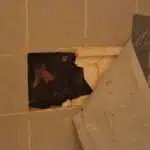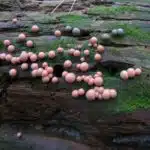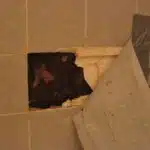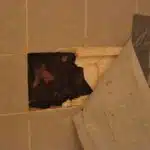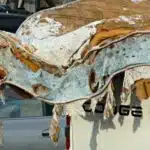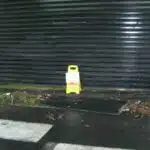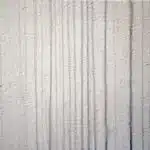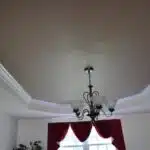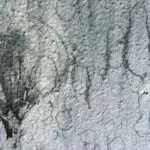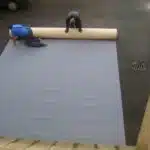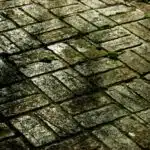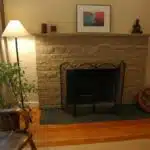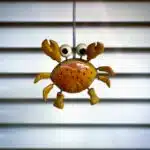As a professional house cleaner, one of the most common problems I encounter in homes is mold growth on walls. Mold not only looks unsightly but can also pose a risk to your health if left unaddressed. It can cause respiratory problems, allergies, and even trigger asthma attacks. Therefore, it’s essential to know how to clean mold off walls effectively.
In this article, I will guide you through the steps to safely and efficiently remove mold from your walls. We’ll look at the tools and materials you need for the job and the precautions you should take when dealing with mold. By following these tips, you’ll be able to keep your home free of mold and ensure that it remains a safe and healthy place for you and your loved ones to live in.
Understanding The Dangers Of Mold
To effectively clean mold off walls, it is essential to understand the dangers of mold. Mold spores are present everywhere and can grow on any surface with moisture and oxygen. They reproduce by releasing tiny spores into the air, which can be inhaled by humans and animals. Prolonged exposure to these spores can lead to various health risks, including respiratory problems such as asthma, allergy symptoms, and even lung infections.
Mold can cause serious health issues for people who are exposed to it for extended periods. The severity of the health risks depends on several factors such as the type of mold present, the duration of exposure, and individual susceptibility. Common reactions to prolonged exposure include eye irritation, coughing fits, headaches, and skin rashes. In some cases, mold exposure may also contribute to chronic illnesses like cancer or neurological problems.
It is crucial to take mold growth seriously and act promptly when you notice any signs of its presence. By understanding the dangers associated with mold spores and their potential impact on your health, you can better protect yourself and your loved ones from harm. Identifying the type of mold on your walls is a critical first step in cleaning it safely and effectively while minimizing health risks.
Identifying The Type Of Mold On Your Walls
Mold is an unsightly problem that can appear on walls in a variety of colors and shapes. It is important to accurately identify the type of mold before beginning the cleaning process. Common types of mold include black mold, green mold, and white mold. Cleaning methods for each type of mold differ, so it is important to take the necessary steps to ensure appropriate removal.
Types Of Mold
As a professional house cleaner, it is important to identify the type of mold present on walls in order to take appropriate measures. Different types of mold have different characteristics and effects on health. Some common types of mold include Aspergillus, Cladosporium, Penicillium, and Stachybotrys.
Aspergillus is a common type of mold that can be found in damp areas such as bathrooms or kitchens. It has a fluffy texture and can be black or green in color. Exposure to this type of mold can cause allergic reactions and respiratory problems. Cladosporium is another type of mold that can grow on walls, carpets, and fabrics. It appears as black or green spots and can cause allergies and asthma attacks.
Penicillium is a blue-green colored mold that grows on walls with high moisture levels. It produces mycotoxins which can lead to respiratory problems and skin irritation. Stachybotrys, also known as black mold, thrives in areas with excessive moisture such as leaky pipes or roofs. It has a slimy texture and produces toxins that can lead to serious health issues such as memory loss, fatigue, and respiratory problems.
To prevent the growth of these molds in homes, it is important to control humidity levels by using dehumidifiers or air conditioners. Regularly cleaning surfaces prone to moisture buildup like bathrooms and kitchens is also necessary. In addition, any water leaks should be repaired immediately to prevent further mold growth.
In summary, identifying the type of mold present on walls is crucial for taking appropriate measures to clean them effectively while ensuring safety for everyone involved. By understanding their characteristics and effects on health along with adopting best practices for preventing their growth in homes, we can keep our living environments healthy and safe for all occupants.
Cleaning Methods
Identifying the type of mold present on walls is only half the battle in maintaining a healthy living environment. Once you have identified the mold, it is important to take appropriate measures to clean it effectively and prevent its growth from recurring. In this subtopic, we will discuss different cleaning methods and prevention tips that can be adopted by homeowners and professional house cleaners alike.
There are two main options for cleaning molds: DIY or professional cleaning services. DIY cleaning involves using household items such as vinegar, bleach, or baking soda to scrub off the mold from surfaces. However, it is important to note that some molds can be hazardous to health and may require professional intervention. Professional cleaning services have specialized equipment and trained professionals who can handle molds safely while ensuring they do not spread to other areas of the home.
Prevention tips for mold growth include controlling humidity levels through proper ventilation or using dehumidifiers. Regularly inspecting homes for leaks or areas prone to moisture buildup like bathrooms or kitchens is also necessary. Any water damage should be repaired immediately to prevent further mold growth.
In conclusion, identifying the type of mold present on walls is just one aspect of maintaining a healthy living environment. Proper cleaning methods and prevention tips are equally important in ensuring that molds are removed effectively without causing harm to anyone involved. Whether opting for DIY cleaning or professional services, following best practices for preventing mold growth should always be a priority for homeowners and house cleaners alike.
Gathering The Necessary Materials And Tools
To effectively clean mold off walls, you will need a few materials and tools. The good news is that these items can be found at most local hardware or home improvement stores. Additionally, there are cost-effective options to choose from that will still get the job done.
Firstly, you will need a cleaning solution specifically designed for removing mold. This can be found at most hardware stores and online retailers. Look for products that contain bleach, hydrogen peroxide or vinegar as active ingredients as they have been proven effective in eliminating mold spores.
Secondly, you’ll need protective gear such as gloves, goggles and a mask to protect yourself from the potential health hazards of inhaling or touching mold spores. It is also recommended to wear old clothes that can be washed afterwards.
Finally, investing in the best tools for removing mold from hard-to-reach areas is essential. A quality scrub brush with stiff bristles can help remove stubborn mold from textured surfaces while a long-handled scraper or putty knife can easily remove mold growing in corners and crevices. These tools will make your job easier and more efficient.
Now that you have gathered all the necessary materials and tools, it’s time to prepare the area for cleaning without spreading the spores further.
Preparing The Area For Cleaning
Best practices for cleaning mold off walls include properly preparing the area. This step is essential to ensure that you can clean the mold effectively and safely. Start by removing any furniture, decorations, or other items from the room. This will give you ample space to work and prevent any damage to your belongings during the cleaning process.
Next, cover any remaining items in plastic sheeting or drop cloths to protect them from potential exposure to mold spores or cleaning solutions. Additionally, turn off any HVAC systems or fans in the room to avoid spreading mold spores throughout your home. Doing so will prevent further contamination of other areas of your home and help mitigate potential health risks associated with exposure to mold.
Common mistakes people make when preparing an area for cleaning include failing to remove all items from the space and not properly covering remaining items. These oversights can result in damage to personal belongings or even cross-contamination of other areas of your home with mold spores. Taking extra care during this step will not only ensure a successful cleaning but also help protect your health and property.
Now that you have prepared the area for mold removal, it’s time to focus on protecting yourself by wearing proper protective gear. This will minimize exposure to mold spores and eliminate the risk of inhalation, skin irritation, or eye irritation during the cleaning process.
Wearing Protective Gear
Protective gear is of utmost importance when cleaning mold off walls. Mold can cause serious health problems, such as respiratory issues and allergic reactions. Wearing protective gear can minimize exposure to mold spores and prevent the inhalation of harmful particles.
The risks of not wearing protective gear while cleaning mold off walls are significant. Exposure to mold can lead to health problems that may require medical attention. Additionally, without proper protective gear, individuals may spread mold spores to other areas of the house, making the problem worse.
Choosing appropriate protective gear is essential when cleaning mold off walls. The following list provides some helpful tips for selecting the right equipment:
- Wear gloves to protect your hands from harmful chemicals.
- Use a respirator or mask to prevent inhaling airborne particles.
- Wear goggles or safety glasses to protect your eyes from irritants.
- Cover exposed skin with long-sleeved shirts and pants to prevent contact with mold spores.
- Choose sturdy shoes with rubber soles that will provide traction on wet surfaces.
By following these tips, you can ensure that you are adequately protected while cleaning mold off walls. In the next section, we will discuss how to create a cleaning solution that is effective in removing mold from walls.
Creating A Cleaning Solution
To effectively clean mold off walls, creating a cleaning solution is an important step. There are various options available, including DIY and professional solutions. While the cost-effective option may be to create your own cleaning solution, it is important to consider the potential risks and effectiveness of the solution.
DIY solutions can be made using household items such as vinegar, hydrogen peroxide, or bleach. However, these solutions may not completely eliminate the mold and could potentially cause harm to yourself or others if not used properly. Professional solutions often use stronger chemicals that are specifically designed for removing mold and can provide better results.
When deciding which solution to use, it is important to weigh the pros and cons of each option. DIY solutions may be more cost-effective but come with potential risks, while professional solutions may require a higher investment but offer greater effectiveness and safety.
Next, we will discuss how to apply the chosen cleaning solution to the affected area in order to effectively remove the mold from your walls.
Applying The Solution To The Affected Area
Now that you have created an effective cleaning solution, it’s time to apply it to the affected area. However, before doing so, it is important to take protective measures. Wear gloves and a mask to avoid inhaling mold spores and prevent skin irritation. Also, make sure the area is well-ventilated by opening windows or using a fan.
Once you have taken the necessary precautions, apply the cleaning solution to the affected area using a cloth or sponge. Make sure to cover all areas with mold growth thoroughly. Allow the solution to sit for 10-15 minutes to ensure that it penetrates deep into the mold.
After waiting for 10-15 minutes, use a scrub brush or abrasive pad to scrub away the mold from walls. Focus on one small section at a time and rinse your brush or pad frequently in water as you work. Keep in mind that some molds may require more elbow grease than others, so be prepared for some stubborn spots that may need extra attention.
Transition: With these steps, you can effectively clean mold off your walls without causing any damage. However, there are some cases where professional help may be required, especially if the mold has spread extensively or caused structural damage.
Scrubbing The Mold Away
Now that the mold is contained, it’s time to scrub it away. This step is crucial because leaving even a small amount of mold behind can lead to regrowth. To ensure that the walls are completely clean, you need to choose the right scrubber and use the proper technique.
Choosing the right scrubber can make all the difference in removing mold from walls. Avoid using steel wool or abrasive scrubbers as they can damage the paint or wallpaper on your walls. Instead, opt for soft-bristled brushes or sponges that are gentle on surfaces but still effective at removing mold.
Using the proper technique will also help you remove mold from your walls without damaging them. Start by applying a cleaning solution to the affected area and then use a back-and-forth motion with your chosen scrubber. Be sure to apply enough pressure to remove all visible mold, but not so much that you damage your walls. Repeat this process until all visible signs of mold have been removed.
- Use a soft-bristled brush or sponge.
- Apply enough pressure to remove all visible mold without damaging walls.
- Work in a back-and-forth motion.
- Repeat until all visible signs of mold have been removed.
With these tips, you’ll be able to effectively scrub away any traces of mold from your walls without causing any damage. Now that you’ve finished scrubbing, it’s time to move on to rinsing the area with water for a thorough clean.
Rinsing The Area With Water
Before beginning the process of rinsing the area with water, it is important to gather the necessary supplies, such as buckets, sponges, rags, and protective clothing.
In preparation for rinsing the area with water, the surface should be cleared of any debris and furniture should be moved to an area that is not exposed to water.
The walls should be rinsed from the top down, using a damp rag or sponge.
The sponge or rag should be wrung out regularly to avoid over-saturating the area with water.
If the area is particularly dirty, a mild detergent may be added to the water.
After the walls have been rinsed, any remaining mold should be removed using a scrub brush.
Gathering Supplies
When it comes to cleaning mold off walls, having the right supplies can make all the difference. It’s essential to gather everything you need before starting the cleaning process. At a minimum, you’ll need gloves, goggles, a face mask, and a bucket of water. These will help protect you while working with potentially harmful chemicals and prevent further spread of mold spores. You can purchase these items at any home improvement store or online retailer.
In addition to protective gear, you’ll also need cleaning solutions to effectively remove mold from walls. You can buy commercial cleaners specifically designed for mold removal at most hardware stores or online retailers. Alternatively, if you prefer more natural options, there are several DIY alternatives that use household items like vinegar or hydrogen peroxide. These are effective options that won’t harm your surfaces or pose a risk to your health.
Before getting started with the actual cleaning process, be sure to test any new cleaning solution on a small area first to ensure it doesn’t damage your wall’s surface or paint. Once you have your supplies gathered and tested your chosen solution, you’re ready to begin rinsing the area with water. This is an essential step in removing mold spores and ensuring they don’t return after cleaning. Use clean water from a bucket or hose and rinse thoroughly until all traces of the cleaning solution are gone. Remember not to skip this step as leaving cleaner residue can cause further damage over time.
Preparing The Area
Now that you have gathered the necessary cleaning supplies and tested your chosen solution, it’s time to prepare the area before rinsing. Before anything else, make sure to turn off any HVAC or fans in the room to avoid spreading mold spores. Cover nearby furniture and floors with plastic sheets or drop cloths to protect them from cleaning solutions and water splashes.
Next, put on your protective gear such as gloves, goggles, and a face mask. Safety is paramount when dealing with potentially harmful chemicals and molds. If you are using commercial cleaners, read the label instructions carefully before applying them to the affected areas. Follow all safety precautions mentioned in the label such as wearing additional clothing protection or working in a well-ventilated space.
When you’re ready to rinse off the cleaning solution, fill a bucket with clean water or use a hose for outdoor areas. Start at the top of the wall and work your way down systematically while wiping away excess water as you go. Be thorough in your rinsing process to ensure that no cleaning solution residue remains on the wall surface. Using clean water can prevent further damage caused by leaving cleaner residue behind. With these steps done correctly, you will be able to remove mold effectively while protecting yourself and maintaining cleanliness around your home.
Rinsing Walls
Once the cleaning process has been completed, it is crucial to rinse the area with water thoroughly. The importance of thorough rinsing cannot be overstated, as any leftover cleaning solution residue can cause damage to the surface or attract more mold growth. Additionally, some cleaning solutions may contain harmful chemicals that can pose a risk to your health and the environment if not properly removed.
To ensure eco-friendly rinsing, you can use alternatives such as vinegar or hydrogen peroxide instead of commercial cleaners. These natural solutions are effective in removing mold while being safe for both you and the environment. When rinsing walls, start at the top and work your way down systematically to avoid missing any spots. Use a bucket of clean water or a hose for outdoor areas to remove all traces of cleaning solution residue.
In conclusion, proper rinsing is essential in removing mold effectively and preventing further damage. It is important to take extra care when dealing with potentially harmful chemicals by wearing protective gear and following label instructions. By using eco-friendly alternatives and being thorough in your rinsing process, you can achieve a clean and healthy living environment for yourself and those around you.
Drying The Wall
After cleaning mold off the walls, it is important to dry them completely before moving on to the next step. This is because moisture can lead to the growth of mold and mildew, which can cause health problems over time. To ensure that the walls are properly dried, adequate air circulation must be provided in the room.
One way to improve air circulation is by opening windows and doors. Fans can also be used to increase air flow in the room. If possible, a dehumidifier should be used to control moisture levels in the air. This will help prevent any future mold growth on the walls.
Once the walls are completely dry, they can be painted over or sealed with a moisture-resistant paint or sealer. This will help prevent any future mold growth and keep your walls looking fresh and clean for longer periods of time. However, it is important to note that painting over or sealing walls should only be done after ensuring that all traces of mold have been removed.
Transition: Now that you have learned how to properly dry your walls after cleaning mold off of them, it is time to inspect for any remaining mold spores.
Inspecting For Any Remaining Mold
As the wall dries, it’s important to remember the adage, “prevention is better than cure.” This means that taking preventative measures is more effective in avoiding mold growth than trying to remove it after it has already spread. However, if you do find mold on your walls, it’s important to know how to properly remove it.
Common molds found on walls include black mold, green mold, and white mold. While these are easily visible on the surface of the wall, there may be hidden areas where mold can grow undetected. These areas include behind wallpaper or drywall, inside insulation, or in the ceiling or floor. It’s important to thoroughly inspect these areas and address any mold growth before it spreads further.
When it comes to removing mold from walls yourself, there are a few options available. These include using bleach solutions or natural remedies like vinegar or tea tree oil. However, if the mold growth is extensive or if you have health concerns such as allergies or asthma, it’s best to call a professional for assistance. They will have the necessary equipment and expertise to safely and effectively remove all traces of mold from your walls.
To prevent future mold growth on your walls, there are preventative measures you can take such as ensuring proper ventilation in bathrooms and kitchens, fixing leaks promptly, and keeping humidity levels low. Regularly cleaning and inspecting your walls for signs of moisture or mold can also help catch any potential growth early on before it has a chance to spread. By taking these steps, you can ensure that your home remains safe and healthy for years to come.
Preventative Measures To Avoid Future Mold Growth
Preventative measures are the best way to avoid future mold growth in your home. One of the simplest and most effective ways to prevent mold is by maintaining proper ventilation. Make sure that your home’s ventilation system is working correctly and regularly clean your air ducts to ensure good airflow throughout the house.
Another preventative measure is to keep your home dry. Moisture is one of the main causes of mold growth, so it’s important to fix any leaks or water damage as soon as they occur. Keep an eye out for areas in your home that may be prone to moisture, such as basements or bathrooms, and take extra steps to keep these areas dry.
DIY solutions can also help prevent future mold growth. Regularly cleaning surfaces with a mixture of vinegar and water can help kill existing mold spores and prevent new ones from forming. Additionally, using a dehumidifier can help reduce moisture levels in the air, making it more difficult for mold to grow.
To deal with severe cases of mold growth, it’s important to seek professional assistance. In some cases, extensive mold growth may require the removal of affected materials or even relocation until the issue is resolved. It’s crucial not to ignore severe cases of mold growth, as it can cause health problems for those living in the affected area.
Dealing With Severe Cases Of Mold Growth
After taking preventative measures to avoid future mold growth, it’s important to know how to deal with severe cases of mold growth. Mold removal methods can vary depending on the severity of the situation. In some cases, DIY methods may be effective while in others, professional services may be necessary.
DIY mold removal methods include using bleach or vinegar solutions, baking soda paste, and hydrogen peroxide. However, it’s important to note that these methods may not be effective for severe cases of mold growth and can even cause harm if not used properly. It’s also important to wear protective gear such as gloves and masks when attempting DIY mold removal.
For severe cases of mold growth or for those who prefer professional assistance, seeking the help of a professional cleaner is recommended. Professional cleaners have access to specialized equipment and are trained in effective mold removal methods. They also have the necessary safety gear to protect themselves and their clients during the cleaning process.
In order to effectively prevent future mold growth at home, it’s important to maintain proper ventilation, reduce humidity levels through dehumidifiers or air conditioning units, fix any leaks or water damage promptly, and regularly clean and inspect areas where moisture tends to accumulate such as bathrooms and kitchens. By following these tips and knowing when to seek professional help for severe cases of mold growth, homeowners can ensure a safe and healthy living environment for themselves and their families.
Seeking Professional Help
As the saying goes, “sometimes you need to call in the professionals.” When it comes to cleaning mold off walls, there are certainly times when hiring professionals is the best course of action. While DIY methods can be effective for small areas of mold growth, larger infestations or those in hard-to-reach places may require specialized equipment and expertise that only professional cleaners can provide.
If you’re unsure whether to tackle your mold problem yourself or hire professionals, consider the following points:
- DIY cleaning methods can be dangerous if not done properly, as exposure to mold spores can cause health problems.
- Professional cleaners have access to specialized equipment and cleaning products that are more effective than household cleaners.
- Hiring professionals saves time and energy, allowing you to focus on other tasks or simply relax.
- Professional cleaners can identify and address underlying issues that may be contributing to mold growth, such as water leaks or poor ventilation.
Ultimately, the decision to hire professionals or clean mold off walls yourself will depend on the severity of the problem and your personal preferences. However, if you do choose to hire professionals, be sure to research potential companies thoroughly and ask for references before making a decision.
Moving forward with a clean and healthy home environment requires ongoing attention and effort. In addition to addressing mold growth promptly and effectively, it’s important to maintain good hygiene practices throughout your home. This includes regular cleaning of high-touch surfaces like doorknobs and light switches, proper ventilation in bathrooms and kitchens, and prompt repairs of any water damage or leaks. By taking these steps proactively, you can help prevent future mold growth and ensure a safe environment for yourself and your family.
Maintaining A Clean And Healthy Home Environment
Maintaining a clean and healthy home environment can be a daunting task, especially if you have a busy schedule. However, with the right tips and tricks, you can keep your living space organized and hygienic. One of the best ways to maintain cleanliness is by decluttering regularly. Consider donating or selling items that you no longer need or use, as this will make it easier to clean your home.
Another essential aspect of maintaining a clean home is using DIY cleaning solutions for common household items. These solutions are often cheaper and more environmentally friendly than store-bought cleaners. For example, vinegar mixed with water makes an excellent all-purpose cleaner for surfaces like countertops and floors. Baking soda mixed with water can also be used to clean stains on upholstery or carpets.
In addition to decluttering and using DIY cleaning solutions, you should also pay attention to specific areas prone to dirt and mold growth. For instance, bathrooms are susceptible to mold growth due to moisture buildup. To prevent mold from growing in your bathroom, ensure that there is adequate ventilation by opening windows or running exhaust fans during shower time. You should also wipe down surfaces regularly with a mixture of vinegar and water.
| Tips for Organizing Your Home | DIY Cleaning Solutions |
|---|---|
| Declutter regularly | Vinegar + Water |
| Use storage containers | Baking Soda + Water |
| Label everything | Lemon Juice + Salt |
| Designate cleaning days | Olive Oil + Lemon |
By following these simple tips for organizing your home and using DIY cleaning solutions, you can maintain a clean and healthy living space without spending too much time or money on expensive products. Remember always to wear gloves when handling cleaning solutions and keep any harmful chemicals out of reach of children and pets. With consistent effort, you can create a pleasant environment that promotes physical health while encouraging mental well-being!
Conclusion
Mold growth is a serious issue that can pose health hazards if left untreated. Identifying the type of mold in your home and taking the necessary precautions before cleaning is crucial to maintain a healthy living environment. Gathering the required materials and tools, wearing protective gear, and preparing the area for cleaning are essential steps to effectively remove mold from walls.
Preventative measures such as controlling humidity levels, fixing leaky pipes, and ensuring proper ventilation can help prevent future mold growth. However, in severe cases where mold has spread extensively or caused structural damage, seeking professional help may be necessary. Maintaining cleanliness in your home is vital to avoid health risks associated with mold growth.
As a professional house cleaner, it is critical to stay informed about different types of molds and their health implications. Cleaning should be done with caution and care to avoid further spreading spores. The safety of residents should always come first when dealing with mold growth in homes. It is important to take preventative measures regularly to minimize the chances of encountering further problems related to mold growth. As a responsible homeowner, staying vigilant and proactive in preventing and managing mold growth can help create a safe living space for you and your loved ones.
Image Credits
- “Movable molds for SR 99 tunnel walls” by WSDOT (featured)


